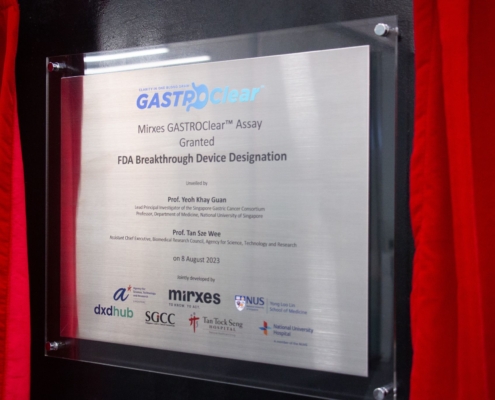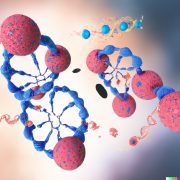How do you measure miRNA expression patterns?
MicroRNAs (miRNAs) are small non-coding RNA molecules that play a critical role in regulating gene expression. They have been shown to be differentially expressed in cancer cells, making them potential biomarkers for cancer diagnosis. In recent years, advances in miRNA assay technology have made it possible to measure miRNA levels with high sensitivity and specificity. In this blog post, we will take a closer look at the different miRNA assay technologies that are currently available and discuss their advantages and limitations. From RT-qPCR to NGS, we’ll explore the most widely used methods for measuring miRNA levels, including their discovery and quantitative capacities, to cost-effectiveness. Stay tuned to learn more about the latest developments in miRNA assay technology and how they can be used for cancer diagnosis and treatment.
Understanding more about miRNA profiling
The discovery of microRNAs (miRNAs) in the early 2000s marked a significant milestone in the field of genetics and molecular biology. MiRNAs are small, non-coding RNA molecules that play a crucial role in regulating gene expression by binding to specific target genes and preventing their translation into protein. The first miRNA, lin-14, was discovered in C. elegans in 1993, but it wasn’t until a decade later that the full extent of miRNA’s biological significance began to be understood when the let-7 family of miRNAs were uncovered in humans.
In the early 2000s, several groups independently developed high-throughput methods for profiling miRNA expression, which allowed researchers to simultaneously measure the levels of many miRNAs in a single sample. These methods, such as microarray and quantitative PCR and NGS, revolutionized the study of miRNA biology and have been widely used to investigate the roles of miRNAs in various biological processes and diseases. Since then, miRNA profiling has become an important tool for understanding the underlying mechanisms of miRNA-mediated gene regulation and for identifying miRNA biomarkers for various diseases, including cancer.
What technologies are used for the detection of miRNA?
There are several technologies that can be used to measure miRNA levels. Some of the most commonly used methods include:
Reverse transcription quantitative polymerase chain reaction (RT-qPCR): This is a widely used method for measuring miRNA levels. It involves reverse transcribing the miRNA into cDNA, and then using quantitative PCR to measure the amount of cDNA present. This method is highly sensitive and specific, and can be used to measure the levels of individual miRNAs or a panel of miRNAs.
Microarray: Microarrays are devices that can be used to measure the levels of thousands of miRNAs simultaneously. They work by hybridizing labeled miRNA samples to a set of probes on the array, and then measuring the fluorescent signal from the probes. This method is useful for global miRNA profiling, but it is less sensitive than RT-qPCR.
Next-generation sequencing (NGS): NGS is a powerful method for discovering and measuring miRNA levels. It involves sequencing the miRNA samples, and then counting the number of reads for each miRNA. This method is useful for global miRNA profiling and can detect miRNAs that are not known. NGS platforms such as Illumina, PacBio, and Nanopore are the most commonly used.
Digital PCR (dPCR): dPCR is a method that allows for the absolute quantification of miRNA using PCR. It is a highly sensitive method that can detect low levels of miRNA and is useful for rare miRNA detection.
These are some of the most widely used methods for measuring miRNA levels, but new technologies are constantly being developed to improve miRNA detection and quantification.
What is the difference between qPCR and NGS?
Quantitative PCR (qPCR) and next-generation sequencing (NGS) are two widely used techniques for measuring gene expression. Both methods can be used to measure the levels of RNA, including miRNA, in a biological sample, but they have some important differences.
qPCR is a highly sensitive and specific method that can accurately measure the levels of a specific RNA molecule in a sample. It is a real-time PCR method that uses fluorescent probes to detect and quantify the amount of target RNA. qPCR is commonly used to measure the expression levels of small numbers of genes, often a few to several dozens, and it is relatively fast, easy to perform and can be done in a single run. Additionally, using qPCR comes with the acknowledgment that the research knows up front what miRNA targets they are looking to assess.
NGS, on the other hand, is a high-throughput method that can simultaneously measure the levels of thousands or even millions of RNA molecules in a single sample. It is based on the sequencing of millions of short fragments of RNA molecules, followed by computational analysis of the resulting sequencing reads. NGS is a powerful tool for genome-wide expression analysis and can be used to study transcriptomes, epigenomes, and other functional genomic features of an organism. It also allows for the identification of novel and alternative transcripts, splice variants and rare transcripts. However, NGS is a more complex and costly method than qPCR and requires bioinformatic expertise for data analysis.
In summary, qPCR and NGS are both powerful methods for measuring gene expression, but they have different strengths and limitations. qPCR is a highly sensitive and specific method that is best suited for measuring the expression levels of small numbers of genes, while NGS is a high-throughput method that is best suited for genome-wide expression analysis.
Top questions about miRNA expression
What technologies exist for measuring miRNA expression?
MicroRNAs (miRNAs) can be measured using various methods including qPCR, NGS, microarray, and digital PCR.
What is the best way to measure miRNA expression?
There is not necessarily a “best” way to measuring miRNA expression. The best mode of measuring miRNA expression from a “most-quantitative” approach is likely qPCR, whereas from a standpoint of miRNA discovery, NGS is likely superior. Therefore, it depends on the question that a scientist or researcher is interested in answering. A likely perspective is that one may start by first using NGS to sequence there samples of interest and then move on to a more quantitative method like qPCR to make a more valuable assessment of expression profiled of miRNAs.
What is useful about measuring miRNA expression patterns?
Measuring miRNA expression patterns can be useful in several ways. First, miRNAs are involved in regulating gene expression and play a role in various biological processes such as cell growth, differentiation, and apoptosis. By measuring miRNA expression patterns, researchers can gain insight into the underlying mechanisms of these processes and how they may be disrupted in disease states. Additionally, miRNA expression patterns can be used as biomarkers for various diseases, such as cancer, and can help in the development of new diagnostic and therapeutic approaches. Furthermore, studying miRNA expression patterns can also be useful in understanding the basic biology of miRNA and how they regulate gene expression.









